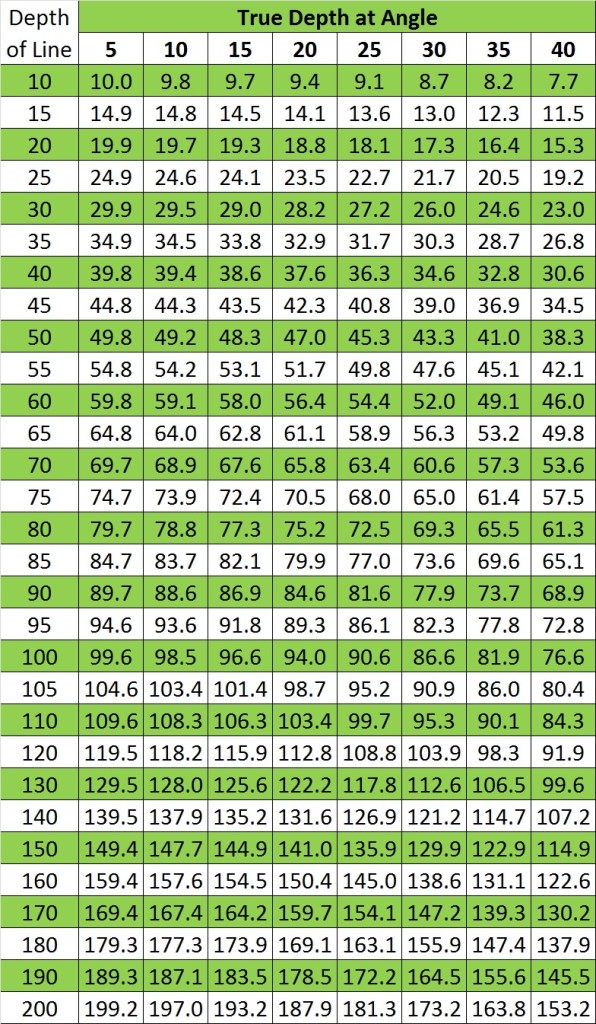When downrigging, there will be a slight discrepancy between the depth of the cannonball (or weight) measured by the amount of downrigger line that has been released and the actual depth that the cannonball is running at. Depending on the boat speed and underwater currents as well as drag in the water of the weight, downrigger line, flashers and lures there will be an angle imparted to the line relatively to vertical. At low speeds and/or shallower depths the angle will be low and the discrepancy from true running depth will be small. At higher speeds and greater depths this discrepancy can be much larger – large enough to miss hitting the active feeding zone or a thermocline. Based on the angle of the line from vertical (θ) and on the known length of line released (L), the true depth (D(true)) of the weight can be calculated as:
The following table shows the results of this calculation for various depths and angles.
Obviously we should avoid a situation where the angle of the line is becoming an issue. Using a heavier weight is one way to fix this. I’ve seen recommendation for 1 pound for every 10 ft of line up to a maximum of 16 pounds. Of course if your using a manual downrigger there will be a limit to the size of the cannonball based on what you can comfortable raise and lower over the day. Use of larger flashers and “gang trolls” may not be possible with smaller weights. Weights that are shaped to reduce drag (such as pancake style weights) may also be beneficial.
The above calculation also assumes that the downrigger line is straight. The effect of drag on the line at weight/flashers/lures will likely impart a bow shape to it. The severity of the bow will again shorten the actual depth of the weight and again this effect will be greatest at greater depths and speeds. It will also vary with the weight/drag of the ball and flasher lure combination in conjunction with the drag on the line. Sorry, just to many variables for an easy calculation – just know that it can be a factor at increasing speed and depth.
There are a number of devices that can attach to the cannonball that will relay both depth and temperature to the boat. Likely a wise investment if you tend to troll regularly at great depths.



